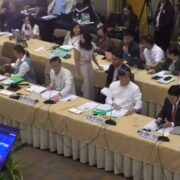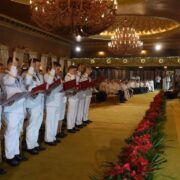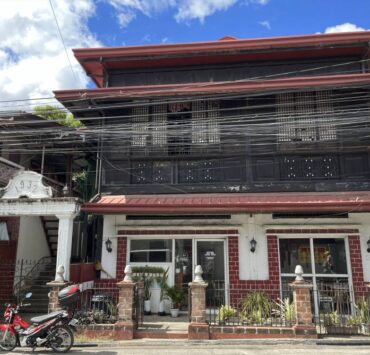‘Moira’ among ‘Regines’ wins Ternocon 4
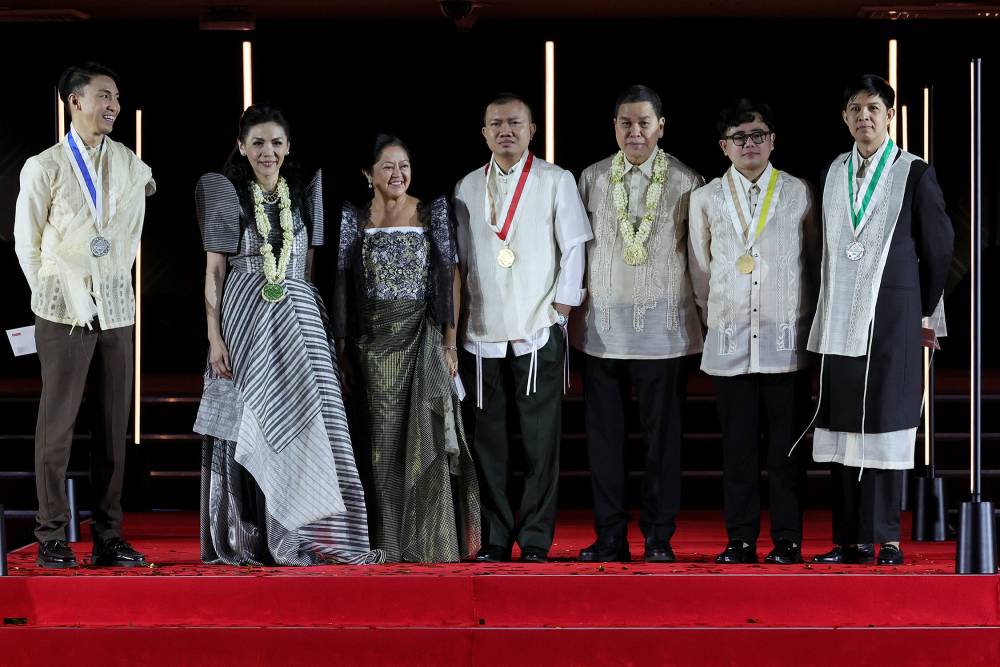
Peach Garde, aka Peter Gagula from Tapaz, Capiz, was feeling down on the eve of the Ternocon 2025 finals. He couldn’t help compare his collection with those of his peers, many of which were glitzy and voluminous. In contrast, his pieces seemed meager in their slightness, with nary a shimmer in sight.
Little did he know that his clean lines and sharp edges would soon bring him something shiny—the gold medal at this year’s Ternocon after winning the coveted Pacita Longos Award last Sunday.
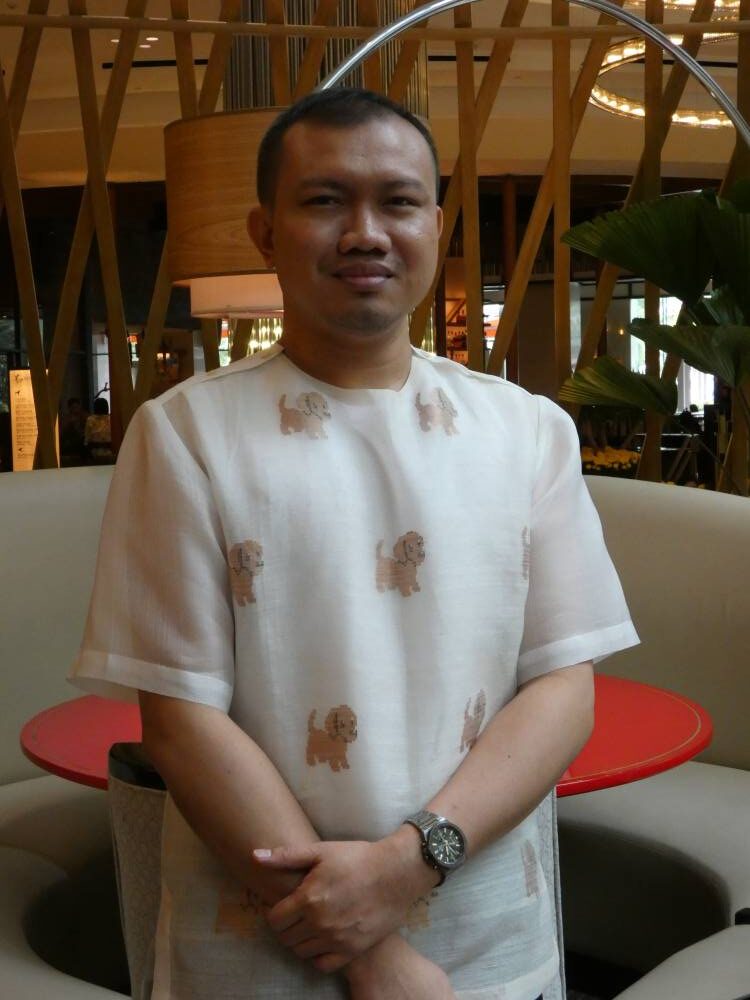
The biennial terno-making and -mentoring convention and competition that was thought up by scenographer Gino Gonzales (who’s now serving as founding artistic director) and Bench/Suyen Corp. founder and CEO Ben Chan, in partnership with the Cultural Center of the Philippines (CCP), saw 10 finalists and two semifinalists vie for the prestigious prize with utmost imagination and innovation, as they each presented a three-piece collection at the final runway show at the Philippine International Convention Center (PICC).
Now on its fourth edition, the competition challenged designers this year by adding more parameters: Each capsule collection had to include a formal terno with pañuelo, a formal balintawak with an alampay and tapis, and a formal kimona (or slip-over blouse) with an alampay and a patadyong (a tubelike wraparound skirt). In addition, they had to take inspiration from 20th-century Filipino visual artists in creating their collections.
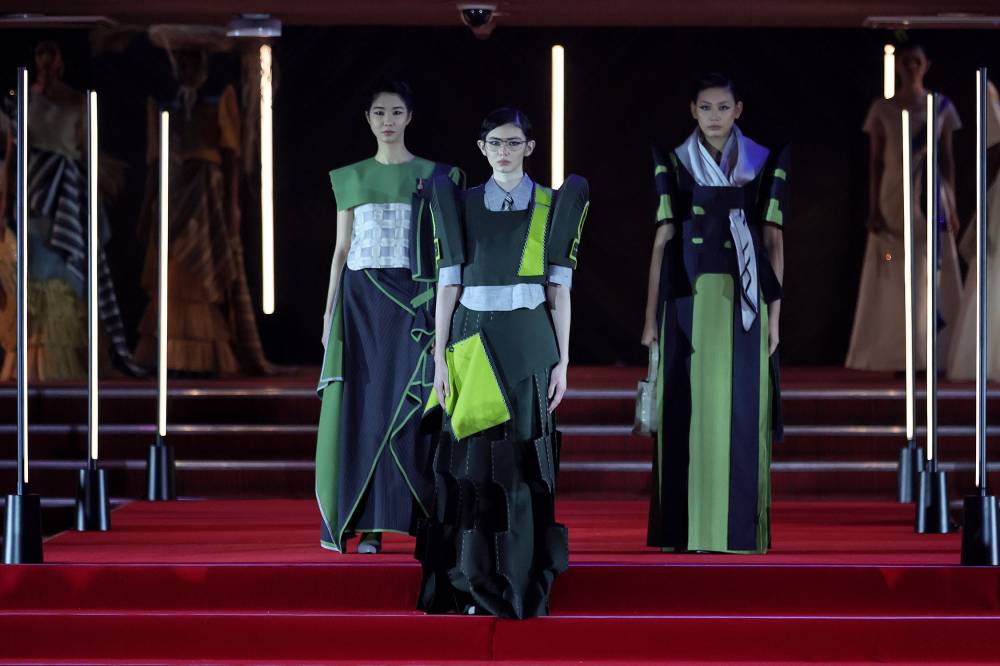
Wearable
“This year’s theme drives home the uniqueness of fashion as it distills these other forms of art into something wearable,” said CCP president Kaye Tiñga.
Ternocon artistic director Ricardo Eric Cruz admitted the contenders had a hard time. “It’s easy if you just design a terno or a balintawak or a kimona. But drawing inspiration from Philippine art is really difficult because you really have to capture the essence of what the artist is all about.”
However, he reasoned that designers must draw inspiration from something anyway, so they just made it more interesting and took things to another level.
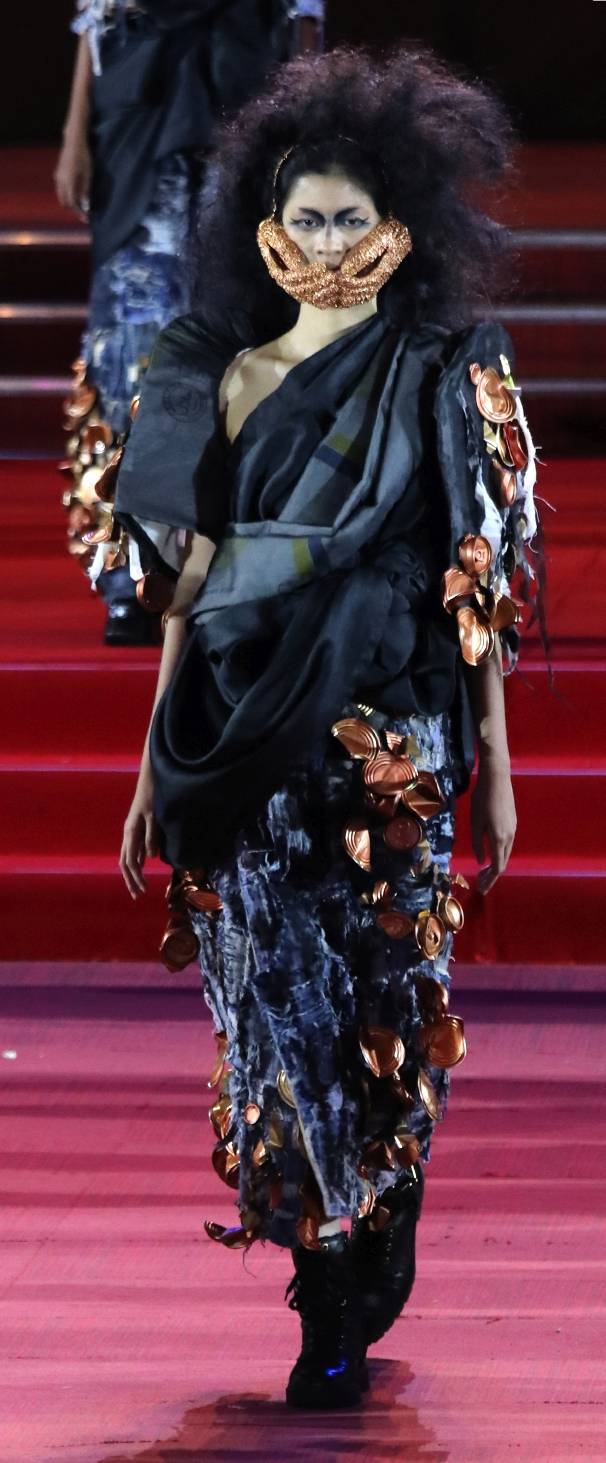
Garde’s winning ensembles reflect the brutalist perspective of National Artist for Architecture Leandro Locsin, known for his buildings’ simplistic designs and floating volume. The terno with pañuelo features long, sharp lines to mimic the high pillars of a structure inside the University of the Philippines Los Baños campus designed by the Filipino architect.
The balintawak has boxy butterfly sleeves with windows while the pleated skirt resembles book pages with jagged edges and curved lines, inspired by the CCP building’s sharp corners but curved bottom.
As for the kimona, which Garde had a hard time translating, he opted to reference the PICC facade to create a structured shoulder with square edges. Meanwhile, the diagonal lines of his patadyong were influenced by Locsin’s Philippine Pavilion in Osaka, Japan. An added feature of his pieces is that the individual elements can actually be mixed and matched.
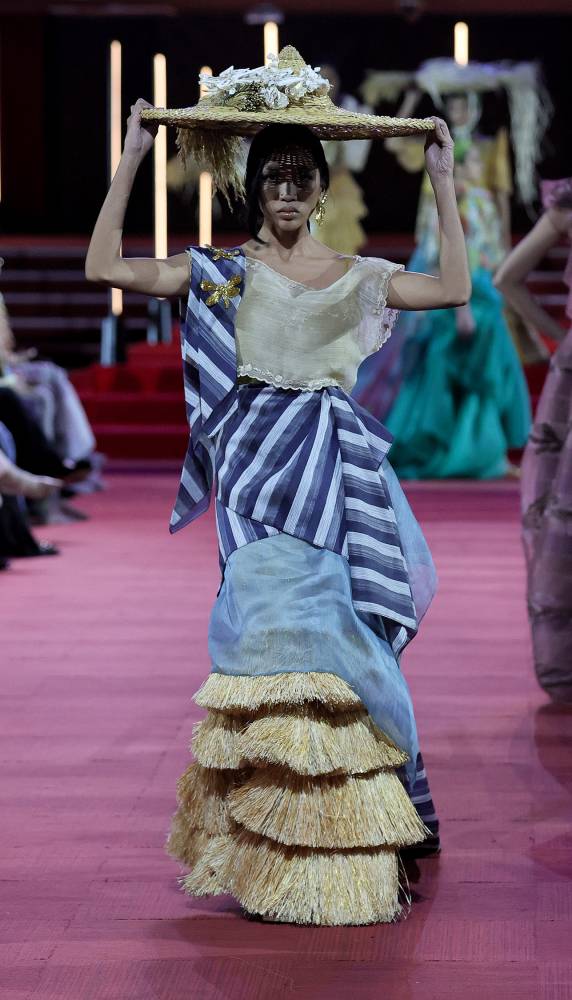
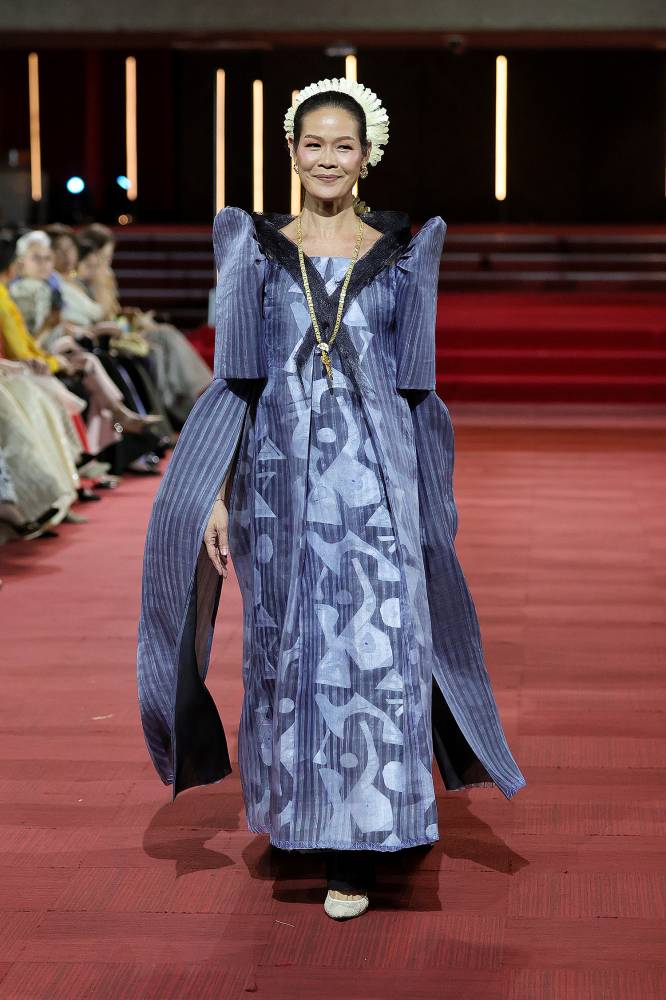
Minimalist
“I’m really a minimalist. I just want to create clean output. That’s all I want,” said the 35-year-old part-time instructor for menswear at the Iloilo Science and Technology University.
He shared his “Moira and Regine” theory to explain his win: “Regine is a biritera and Moira is just soft, soulful. Not all singers have to be biritera.”
“It’s the same for me. Not all designers have to be maximalist. Not all designers have to be glittery. Pwede natin daanin sa palinisan. I’m the Moira.”
True enough, this year’s awardees leaned more toward restraint. Bryan Peralta won the Pura Escurdia Award (silver) for his deceptively simple oriental gowns inspired by Jose Joya’s line drawings. Ram Silva received the Ramon Valera Award (bronze) for his smart depiction of Fernando Amorsolo’s works using tassels to resemble rice straws during harvest. And Windell Madis bagged the Joe Salazar Award (chief mentor’s choice) for his mostly creamy white ensembles with colorful accents inspired by H.R. Ocampo.
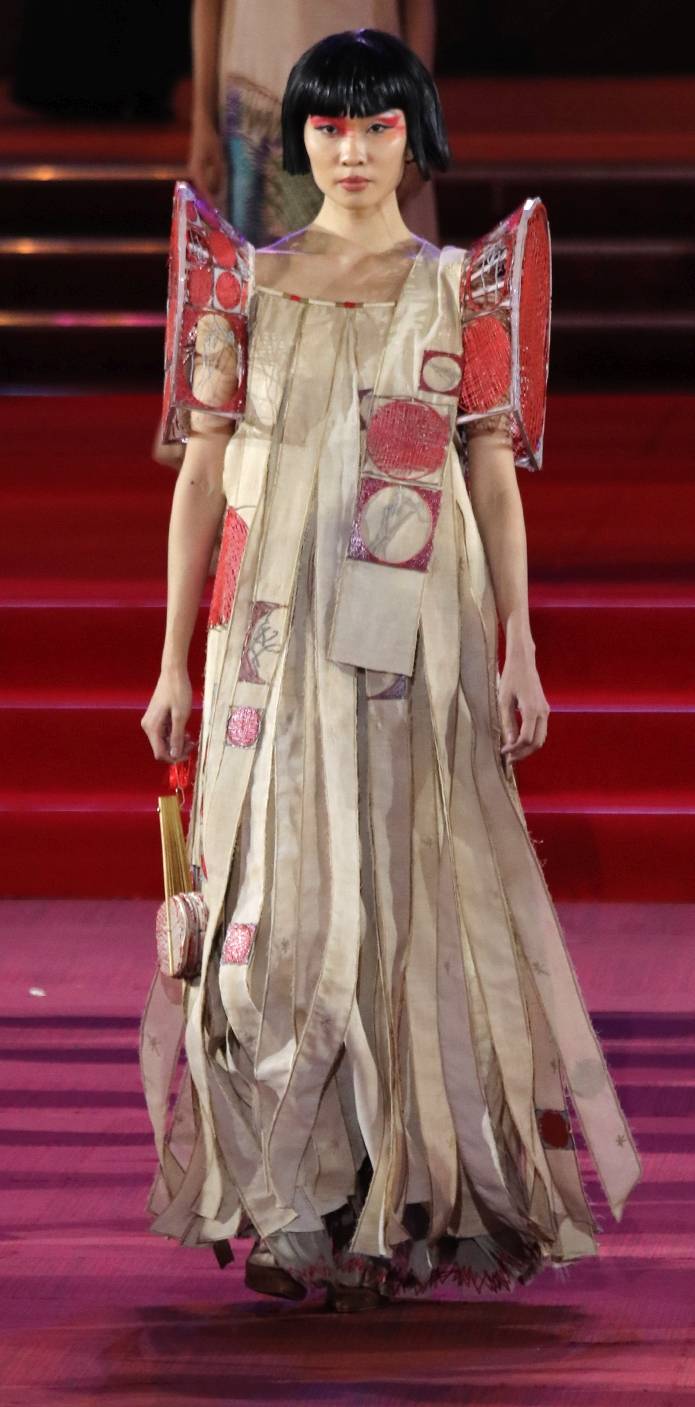
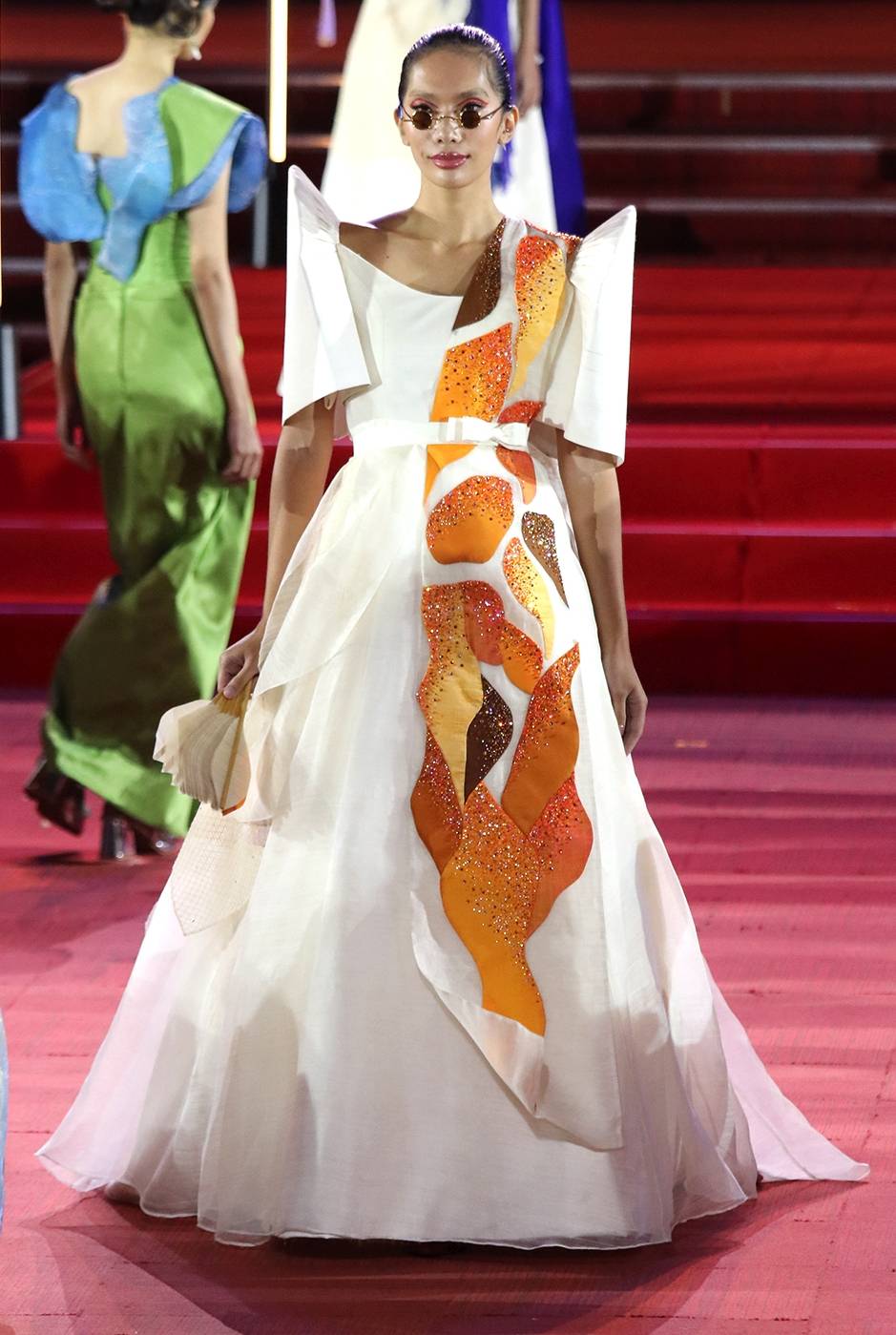
Geom Hernandez also picked Ocampo but chose to go deeper and darker, while PatFROM C1 Giant scarecrow towers over guest artists led by theater performers Gian Magdangal and Lara Maigue. Huge scarecrow mascots guard the booths of the Bambanti Village in front of the Capitol. rick Lazol’s pieces portrayed Joya’s more colorful works. Other finalists took inspiration from painters and sculptors like Nena Saguil for Jared Servano, Vicente Manansala for Jema Gamer, Ramon Orlina for Lexter Badana, BenCab for Irene Subang, Onib Olmedo for Jericho Gonzales, and Impy Pilapil for Nina Gatan, all under the chief mentorship of Inno Sotto.
This year’s mentors Rhett Eala, Lulu Tan-Gan, and Ezra Santos likewise showcased their collections inspired by Lao Lianben, Ang Kiukok, and Abdulmari Imao, respectively. The Ternocon 3 winner, Yssa Inumerable, showcased her Anita Magsaysay-Ho-inspired apparel.
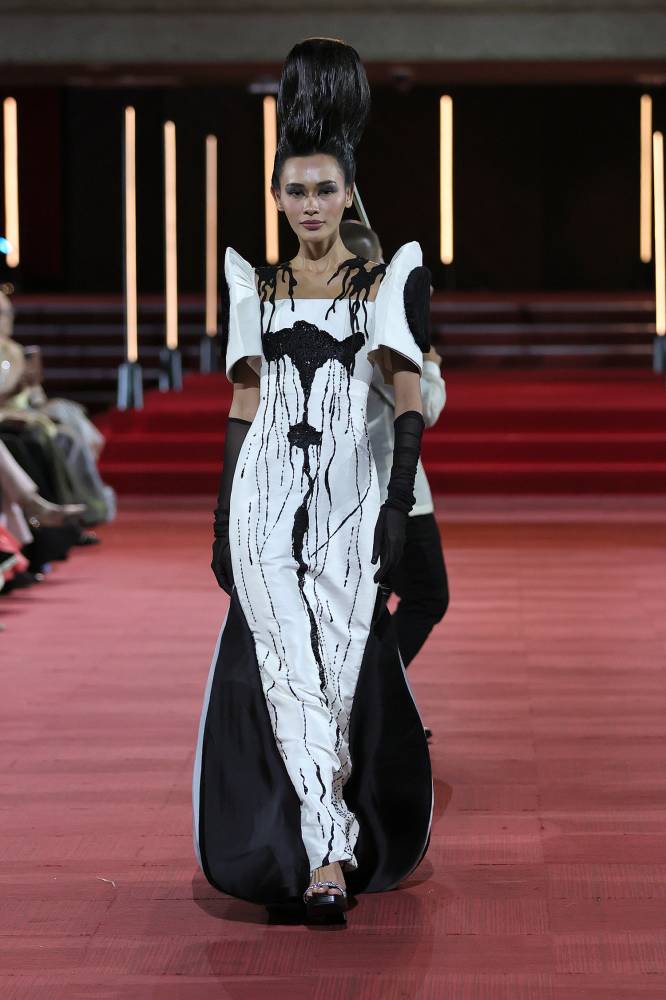
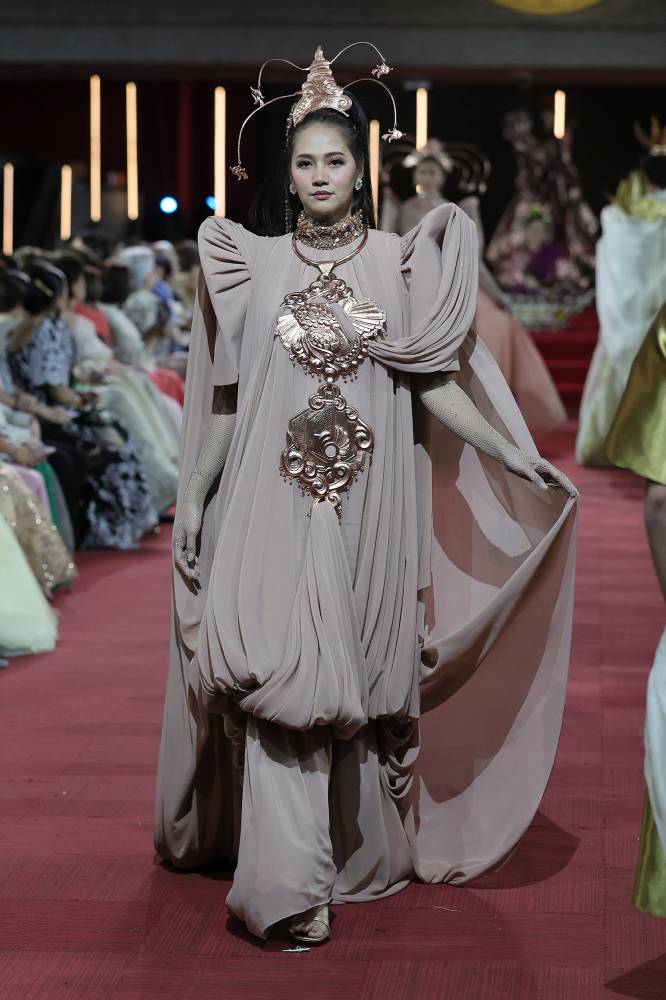
“Art plays a central role in shaping our cultural identity, and fashion has a unique dimension because it is accessible and interactive, connecting directly with the individual wearer,” said Tinga.
This landmark convention, she added, has become “a powerful platform for cultural dialogue to unfold, where young designers and seasoned mentors engage in a rich dynamic exchange in the language of fashion.”
Brought on by a “collective love for the arts and love of country,” Chan said there is still much work ahead. “But our partnership has always proven to be ready for it. This is our panata for the Philippines.”


